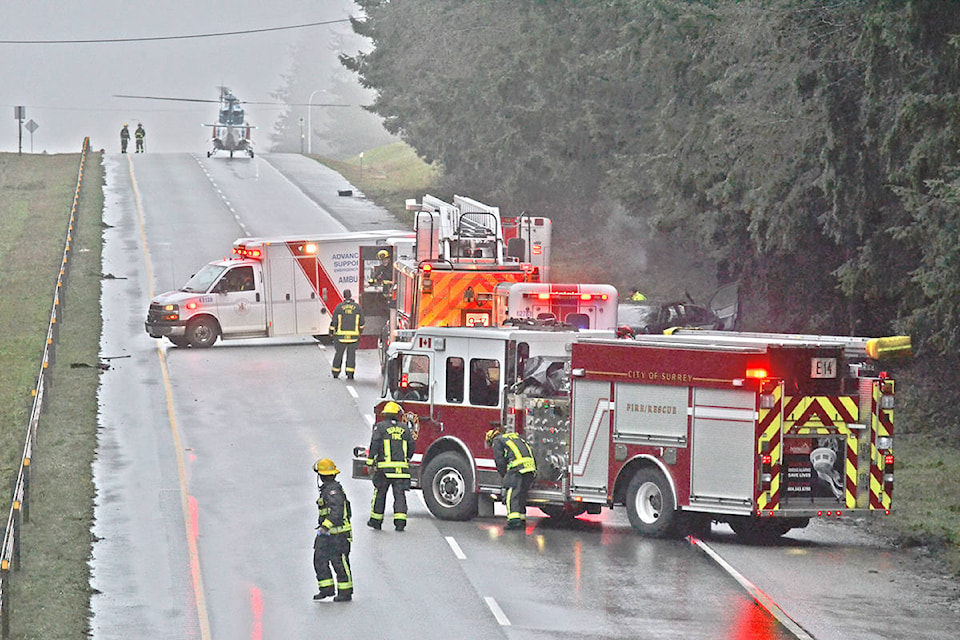It’s been more than a year since B.C. Emergency Health Services changed its 9-1-1 response system to deal with a rise in non-emergency calls, and some communities are calling for changes.
Several resolutions to this year’s Union of B.C. Municipalities convention raise the issue, with rural communities saying they need to make better use of trained volunteer firefighters and others with emergency first aid training to help sick and injured people more quickly.
B.C. Emergency Health Services brought in the “clinical response model” in May 2018, to give priority to the most urgent medical cases when dispatching paramedics and ambulances. (See video below.) It replaced the previous “if you call, we will come” model, which assumed that every call results in ambulance response and transport to hospital.
BCEHS dispatchers were being burdened by non-emergency calls, such as reporting vehicle accidents with no injuries. The new system also allowed for paramedics to treat and release patients, instead of taking everyone to hospital for assessment.
RELATED: One in five 9-1-1 calls in B.C. are non-emergencies
RELATED: Lost jacket, closed restaurant top worst 9-1-1 calls
Municipalities want more use of alternatives if a call is not subject to immediate response.
“Under the new system, highly trained rural first responders attached to fire departments and rescue societies are being called less frequently to medical incidents in their areas, resulting in pain and suffering and risking patient lives in rural and remote areas where ambulance dispatch may be an hour or more away,” says a resolution from the Central Kootenay Regional District.
Fraser Lake council in northwest B.C. says the new response system has aggravated a long-standing shortage of ambulance paramedics in rural regions.
“B.C. Emergency Health Services’ prioritization model often takes EHS crews from smaller rural communities to provide service to larger communities, based on population,” the Fraser Lake resolution states. “This often leaves rural communities with limited or no emergency health care resources in community, significantly increasing EHS response times.”
The UBCM executive has taken up the issue for its annual convention, Sept. 23-27 in Vancouver, calling for a review of restrictions on when firefighters are called. It cites B.C. Auditor General Carol Bellringer’s report in February 2019, calling for faster response in rural regions.
Rural paramedic service is a chronic problem in B.C., with standby rates their union points out have fallen below the B.C. minimum wage. Paramedics and dispatchers reached a tentative contract settlement in July and members are voting on ratification of the terms, which have not yet been made public.
The issue isn’t restricted to rural regions of B.C. Port Moody council in Metro Vancouver has a resolution directed at the BCEHS policy of declining to call firefighters when an ambulance is 10 minutes or less away from a call.
“Whereas fire rescue staff are well equipped to provide support to first responders, this 10-minute window is a critical period of time and the condition of the patient can be deteriorating or the illness or injury can be more serious than first thought,” the Port Moody resolution states.
@tomfletcherbc
tfletcher@blackpress.ca
Like us on Facebook and follow us on Twitter.
